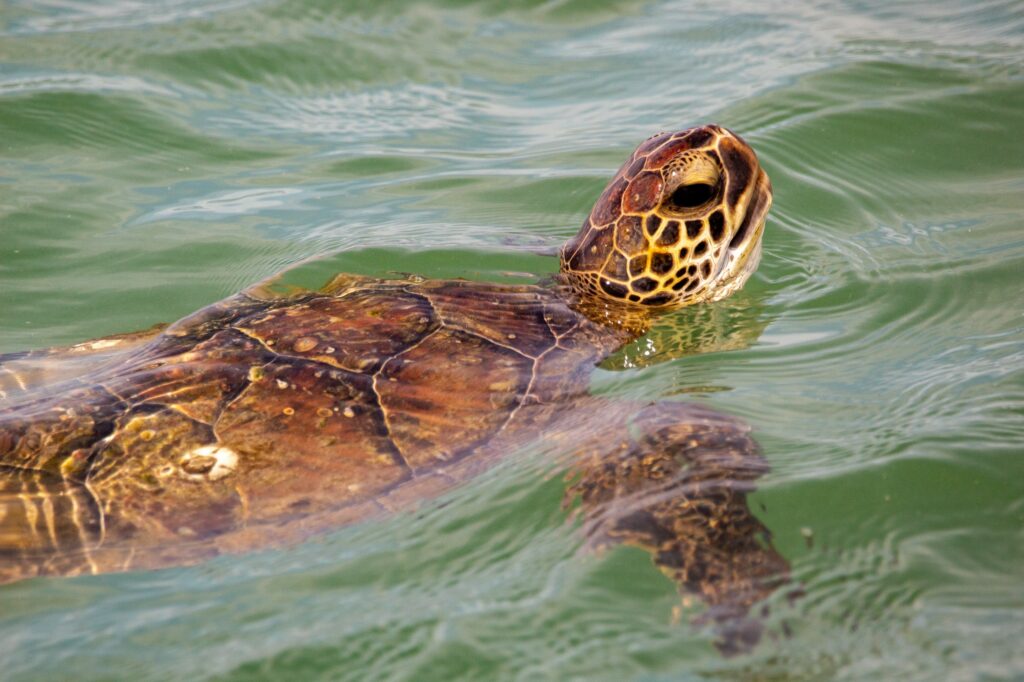
The Coastal Bend region of Texas is a unique and fascinating area with a rich history and culture. From the first inhabitants of the region to the modern-day Texan culture, the Coastal Bend has seen a range of diverse influences that have shaped its identity. Discovering the history and culture of the Coastal Bend can be a fascinating journey for anyone interested in learning more about this region.
One of the best ways to explore the history and culture of the Coastal Bend is by visiting the Museum of the Coastal Bend in Victoria, Texas. The museum’s permanent exhibit displays the last 13,000 years of Texas history, from the first inhabitants of the Coastal Bend region through the French, Spanish, and Mexican colonial efforts. This exhibit provides visitors with a comprehensive overview of the region’s history and culture, making it an excellent starting point for anyone interested in learning more about the Coastal Bend.
In addition to the Museum of the Coastal Bend, there are many other sites, streets, and structures throughout the Coastal Bend that offer a glimpse into the region’s unique history and culture. From the iconic Fulton Mansion, built by George Fulton, a patent-holding inventor, to the Aransas National Wildlife Refuge, which is home to many types of vegetation and wildlife, the Coastal Bend is full of fascinating places to explore. Whether you are a history buff, a nature lover, or simply curious about the region, there is something for everyone to discover in the Coastal Bend.
Geographical Overview of the Coastal Bend
The Coastal Bend is a region in the southern part of Texas that stretches along the Gulf of Mexico. It is named after the curve it makes along the coast, starting in the south near Corpus Christi and extending north to Matagorda Bay. The region is known for its warm climate, sandy beaches, and abundant wildlife.
The largest city in the Coastal Bend is Corpus Christi, which is located on the western edge of Corpus Christi Bay. The city has a rich history and is home to several museums, including the Museum of Science and History and the Art Museum of South Texas. It is also a popular destination for water sports, fishing, and birdwatching.
The Coastal Bend is bordered by two bays: Aransas Bay to the north and Corpus Christi Bay to the south. These bays are separated by Mustang Island, which is a popular destination for tourists and locals alike. The island is home to several state parks, including Mustang Island State Park and Padre Island National Seashore.
South Texas is known for its ranching culture, and the Coastal Bend is no exception. The region is home to several large ranches, including the King Ranch, which is one of the largest ranches in the world. The ranching culture has had a significant impact on the region’s history and economy.
Overall, the Coastal Bend is a unique and beautiful region that offers something for everyone. Whether you’re interested in history, wildlife, or outdoor recreation, there’s plenty to see and do in this part of Texas.
Indigenous People and Early Settlements
The Coastal Bend region of Texas has a rich history of Indigenous peoples and early settlements. Archaeological evidence suggests that the region has been inhabited for at least 11,000 years, with the earliest evidence of human presence dating to the Early Archaic period.
During the Middle and Late Archaic periods, the region saw significant changes in the types of stone tools used by Indigenous peoples. Scrapers, knives, and projectile points were among the most common tools found in archaeological sites from this time period.
By the Late Prehistoric period, Indigenous peoples in the Coastal Bend region had developed complex societies with distinct cultural practices. The Karankawa, Aranama, and Tamique were among the Indigenous groups that inhabited the region during this time. These societies had no written records, so our knowledge of them comes from archaeology and from observations made by European colonists.
One important technological advancement that emerged during this time period was the use of the atlatl, a spear-throwing device that allowed for more accurate and powerful throws. The atlatl was eventually replaced by the bow and arrow, which was introduced to the region by European colonists.
Overall, the history of Indigenous peoples and early settlements in the Coastal Bend region is complex and fascinating. Through archaeological research and the study of historical records, we can gain a better understanding of the rich cultural heritage of this region.
Archaeological Discoveries in the Coastal Bend
The Coastal Bend region of Texas is rich in history and culture, with evidence of human habitation dating back thousands of years. Archaeological discoveries in the area have shed light on the lives of the indigenous peoples who once called the region home.
One of the most common artifacts found in the Coastal Bend are shells, which were used by indigenous peoples for a variety of purposes. Shells were used to make tools, jewelry, and even musical instruments. Archaeologists have also uncovered a variety of other artifacts, such as pottery, stone tools, and bone fragments.
To ensure the preservation of these artifacts, many of them are housed in repositories where they can be studied and protected. Materials used in the construction of these repositories are carefully chosen to ensure that they do not damage the artifacts they contain.
In addition to professional archaeologists, there are also many avocational archaeologists who contribute to the documentation and preservation of archaeological sites in the Coastal Bend. These individuals often work in partnership with organizations such as the Coastal Bend Archaeological Logistics Team (CoBALT) to ensure that sites are properly documented and preserved.
One of the key components of archaeological stewardship is the documentation of sites and artifacts. This documentation includes detailed descriptions of the site, as well as photographs, sketches, and other data that can be used to reconstruct the site and its history.
Overall, the archaeological discoveries in the Coastal Bend provide a fascinating glimpse into the lives of the indigenous peoples who once inhabited the region. Through careful preservation and documentation, we can continue to learn from these artifacts and gain a deeper understanding of the rich history and culture of the area.
Historical Events and Developments
The Coastal Bend region of Texas has a rich history and culture that spans centuries. From the arrival of the first indigenous peoples to the present day, the region has been shaped by a variety of historical events and developments.
One of the most significant events in the region’s history was the Civil War. The Coastal Bend was a strategic location during the war, and both Union and Confederate forces fought for control of the area. The Battle of Corpus Christi, which took place in August 1862, was one of the most significant battles of the war in the region. The Union forces were ultimately victorious, and the Confederate forces were forced to retreat.
Another important historical development in the Coastal Bend was the growth of Port Aransas. Originally a small fishing village, Port Aransas grew rapidly in the early 20th century thanks to the discovery of oil in the area. The town became a major shipping port, and its economy thrived for many years.
The region has also been affected by numerous hurricanes throughout its history. Hurricane Celia, which struck in August 1970, was one of the most devastating hurricanes to hit the area. The storm caused extensive damage to homes and businesses, and many people lost their lives.
Finally, the construction of the Harbor Bridge was a significant development in the region’s history. The bridge, which spans the Corpus Christi Bay, was completed in 1959 and remains an important transportation link for the area.
Overall, the Coastal Bend’s history and culture are shaped by a variety of events and developments. From the Civil War to the construction of the Harbor Bridge, these events have helped to shape the region into what it is today.
Community and Culture of the Coastal Bend
The Coastal Bend is a region in the state of Texas, USA, that stretches along the Gulf of Mexico. The region is known for its rich history and culture, which is a blend of Native American, Mexican, and European influences. The community in the Coastal Bend is diverse, with people from different backgrounds and ethnicities living together in harmony.
Family papers and documents are an important part of the Coastal Bend’s history. These papers and documents provide valuable insights into the lives of the people who lived in the region in the past. They shed light on the social, economic, and political conditions of the time. Many families in the Coastal Bend have preserved their papers and documents, which are now available for researchers and historians.
Agriculture is an important part of the Coastal Bend’s economy. The region’s fertile soil and favorable climate make it an ideal place for growing crops such as cotton, corn, and sorghum. The Coastal Bend is also home to many ranches that raise cattle and other livestock. Agriculture has played a significant role in shaping the culture and traditions of the Coastal Bend.
Oysters are a popular delicacy in the Coastal Bend. The region’s bays and estuaries are home to some of the best oysters in the world. Oyster harvesting has been a part of the Coastal Bend’s economy for over a century. The oyster industry has also played a significant role in shaping the culture and traditions of the region.
The Coastal Bend area is known for its beautiful beaches, lush vegetation, and diverse wildlife. The region is home to many state parks and wildlife refuges that offer visitors a chance to experience the natural beauty of the area. The Coastal Bend’s natural resources have been a source of inspiration for artists, writers, and musicians for generations.
In conclusion, the Coastal Bend is a region with a rich history and culture. Its diverse community, family papers, agriculture, oysters, and natural resources have all played a significant role in shaping the region’s traditions and way of life.
Preservation and Education
The Museum of the Coastal Bend is dedicated to preserving and showcasing the rich multi-cultural heritage of the mid-coastal region of Texas. The museum’s mission is to enhance the appreciation and enjoyment of the region’s heritage, while its purpose is to collect, preserve, exhibit, interpret, and educate using the history and heritage of the region.
Collections at the Museum of the Coastal Bend include the material culture of the Texas Coastal Bend, with artifacts from 13,000 years old to the 20th century. In total, MCB possesses approximately 25,000 artifacts from more than 160 areas and archaeological sites in Texas. The museum’s permanent exhibit displays the last 13,000 years of Texas history, from the first inhabitants of the Coastal Bend region through the French, Spanish, and Mexican colonial efforts, up to the range of diverse influence that have created the modern Texan culture.
The Texas Historical Commission has designated the Museum of the Coastal Bend as an official state historical site. The museum is also a Smithsonian Affiliate, which means that it is part of a network of museums that collaborate to share resources, knowledge, and expertise.
The Art Museum of South Texas, located in Corpus Christi, is another institution that plays a significant role in preserving and promoting the cultural heritage of the Coastal Bend. The museum’s collection includes works by regional, national, and international artists, with a particular emphasis on the art of Texas and the Southwest. The Art Museum of South Texas is part of Texas A&M University-Corpus Christi, which is committed to providing educational and cultural opportunities to the Coastal Bend community.
The Mary and Jeff Bell Library, also located at Texas A&M University-Corpus Christi, is home to a wealth of resources related to the history and culture of the Coastal Bend. The library’s Special Collections and Archives department houses a variety of materials, including rare books, manuscripts, photographs, and oral histories. Researchers and students alike can access these resources to deepen their understanding of the region’s past and present.
In conclusion, the preservation and education efforts of institutions like the Museum of the Coastal Bend, the Art Museum of South Texas, and Texas A&M University-Corpus Christi are of national significance. By collecting, preserving, and interpreting the history and culture of the Coastal Bend, these institutions help to ensure that future generations will have a deep appreciation for the region’s rich heritage.
Coastal Bend Wildlife
The Texas Coastal Bend is home to a diverse range of wildlife, including the rare whooping crane, American alligators, nine-banded armadillos, West Indian manatees, and numerous other species of wildlife. The area is a popular destination for birdwatchers due to its abundance of bird species, including the endangered red-crowned parrot and the great blue heron.
The Coastal Bend is also home to a variety of fish species, including redfish, speckled trout, and flounder, making it a popular destination for fishing enthusiasts. Additionally, the area is known for its sea turtle nesting sites, with five of the world’s seven sea turtle species found in the Gulf of Mexico.
Visitors to the Coastal Bend can also observe a variety of mammal species, including white-tailed deer, coyotes, and bobcats. The area is also home to several species of bats, including the Mexican free-tailed bat, which is known for its nightly emergence from the Frio Bat Cave.
Overall, the Coastal Bend’s diverse range of wildlife and habitats make it a unique and valuable ecosystem. Visitors are encouraged to respect the wildlife and their habitats by following all park rules and regulations.
The Texas Coastal Bend offers history, culture and nature and more! From the fascinating Museum of the Coastal Bend to the stunning vistas of Padre Island National Seashore, there’s something for everyone. Whether you’re looking for a historic getaway or simply exploring what this amazing region has to offer, the Texas Coastal Bend offers plenty of activities for visitors of all ages.



